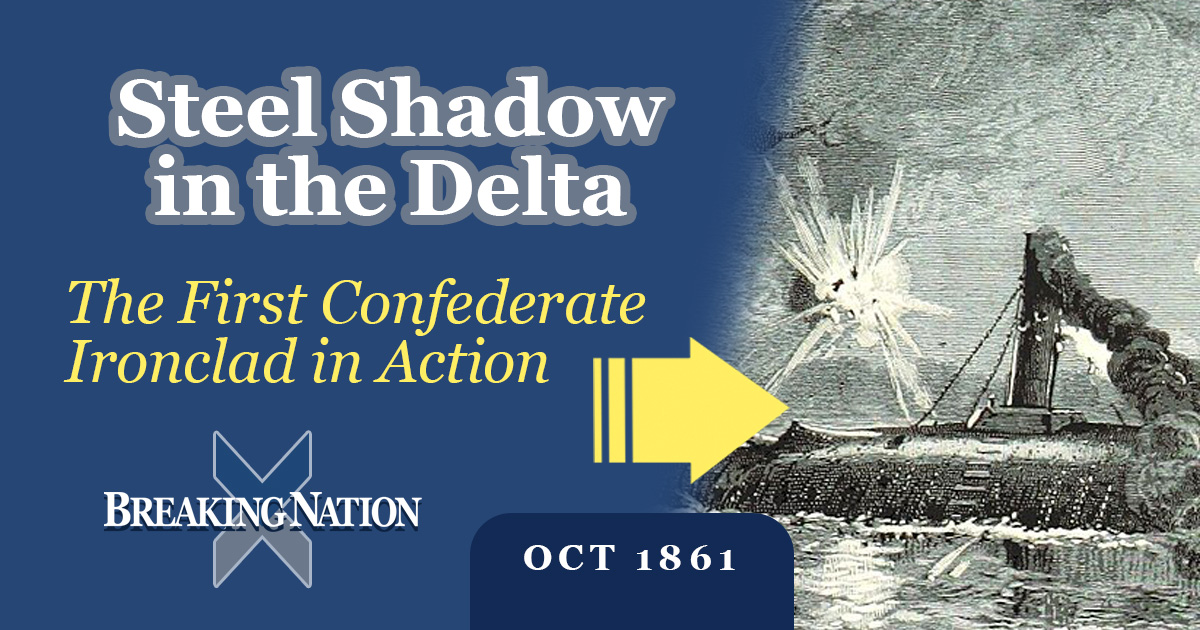Iron Against Wood: The Manassas Strikes at Head of Passes

In the early months of the Civil War, the Confederacy was eager to test innovative means of offsetting the Union’s overwhelming naval superiority. One of the boldest experiments came on October 12, 1861, when the ironclad ram CSS Manassas launched a surprise attack on the Union blockading squadron at the Head of Passes, the strategic junction where the Mississippi River meets the Gulf of Mexico. Though little remembered today, this clash marked the first combat use of an ironclad by the Confederacy and provided a striking preview of how technology and audacity could briefly shake Union control of the waterways.
The Manassas itself was an oddity—originally a civilian towboat named Enoch Train, converted into a low-profile ironclad ram with a rounded casemate resembling a floating turtle shell. Outfitted with a single forward gun and designed to smash into enemy vessels with its reinforced prow, it was the brainchild of riverboat captain John A. Stevenson and New Orleans financiers. At a time when the Union was still in the process of constructing its own ironclad Monitor, the Manassas represented a daring gamble that brute force and surprise might achieve what conventional firepower could not.
That October morning, the Manassas, accompanied by Confederate fire rafts and gunboats, charged into the Union squadron anchored at the Head of Passes. In the confusion, the ironclad rammed the USS Richmond, tearing a hole below its waterline. Although the Union vessel managed to avoid sinking, the shock of the assault was undeniable. Fire rafts drifting downriver added to the chaos, forcing Union ships to cut their anchors and retreat downstream to avoid destruction. For a brief moment, the Confederate strike threatened to unravel Union control of the river’s entrance.
Strategically, the attack did not permanently lift the blockade—Union forces soon regrouped, and the Manassas itself suffered damage that limited its effectiveness in subsequent months. Yet its significance lies less in material gains than in psychological and symbolic impact. The Head of Passes action demonstrated that the Confederacy was willing, and able, to challenge Union naval dominance with unconventional tactics. It rattled Union confidence, drew national attention to the possibilities of ironclad warfare, and foreshadowed the escalating naval arms race that would culminate in famous clashes like the Monitor versus Virginia at Hampton Roads.
In hindsight, the Manassas attack was more of a harbinger than a decisive victory. Still, it underscored a broader truth of the Civil War: innovation—whether in ships, railroads, or rifles—could momentarily shift the balance, even against overwhelming odds. For the Confederates, that October strike at the Head of Passes was both a fleeting triumph and a glimpse of what might have been had their industrial resources matched their ingenuity.
Breaking Nation: A Civil War Podcast explores the American Civil War, its turning points, and our national memory. Discover full episodes, transcripts, and resources at www.breakingnation.com — your destination for in-depth Civil War podcast content and fresh perspectives on America’s past. Listen on Apple Podcasts, Spotify and Amazon Music.




